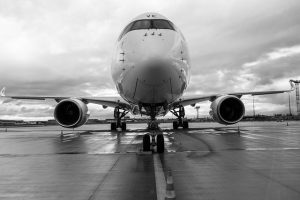
Are you familiar with aircraft firewalls? Not to be confused with the digital cybersecurity tool of the same name, a firewall is a wall-like fireproof structure. It’s used to control and prevent fires from spreading. If a fire breaks out, the firewall will function as a barrier while subsequently protecting vital areas of the aircraft. Here are six facts about aircraft firewalls.
#1) Required By the FAA and EASA
Firewalls aren’t optional. The U.S. Federal Aviation Administration (FAA) requires most commercial and private airplanes to have them. In Europe, the European Aviation Safety Agency (EASA) requires firewalls on most airplanes. It’s an essential safety feature that protects airplanes, as well as their passengers, from fire.
#2) Can Withstand Heat to 2,000 Degrees Fahrenheit
To say firewalls can handle a lot of heat would be an understatement. While there are different types of firewalls used in airplanes, many of them can withstand up to 2,000 degrees Fahrenheit — sometimes even more.
#3) Must Be Properly Sealed
Firewalls must be properly sealed. Even with their fireproof properties, smoke and gases can still pass through openings in firewalls. Therefore, engineers typically use a specialized sealant when installing firewalls. This heat-resistant sealant fills the openings so that the firewalls offer complete protection against fires and related smoke and gases.
#4) Separates Engine From Cockpit
Most single-engine airplanes have a firewall between the engine and the cockpit. Single-engine turboprop airplanes, for instance, typically have an engine at the front of the aircraft, which is responsible for spinning the propeller. Immediately behind this turboprop engine is a firewall, followed by the cockpit. If the engine overheats and catches fire, the firewall will prevent the fire from spreading to the cockpit.
#5) Made of Steel
You can find aircraft firewalls in different materials, but many of them are made of steel. They feature a steel core with a corrosion-resistant. The corrosion-resistant coating, of course, helps to protect the firewall from rusting. Even if it’s exposed to moisture, it won’t rust thanks to this coating. The coating protects the underlying steel from moisture and, thus, oxidation that could otherwise lead to rusting.
#6) Introduced in the 1980s
Firewalls are a relatively new addition to airplanes. It wasn’t until the 1980s when airplanes began using them. Since then, however, they’ve saved many lives while promoting a safer aviation industry. Today, nearly all airplanes, regardless of size or classification, use firewalls to protect against fire-related damage.
- SEO Powered Content & PR Distribution. Get Amplified Today.
- PlatoData.Network Vertical Generative Ai. Empower Yourself. Access Here.
- PlatoAiStream. Web3 Intelligence. Knowledge Amplified. Access Here.
- PlatoESG. Carbon, CleanTech, Energy, Environment, Solar, Waste Management. Access Here.
- PlatoHealth. Biotech and Clinical Trials Intelligence. Access Here.
- Source: https://monroeaerospace.com/blog/6-facts-about-aircraft-firewalls/



